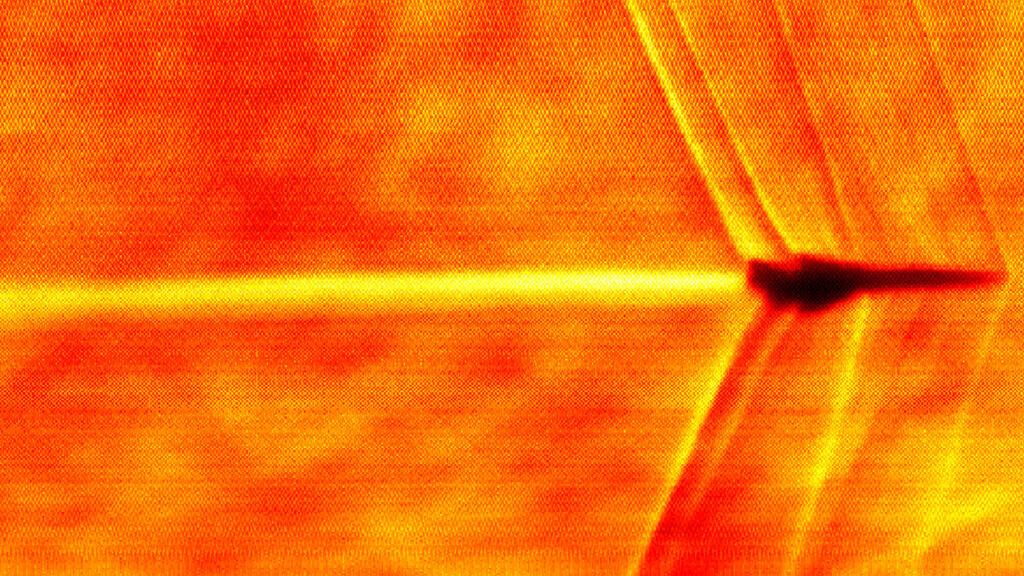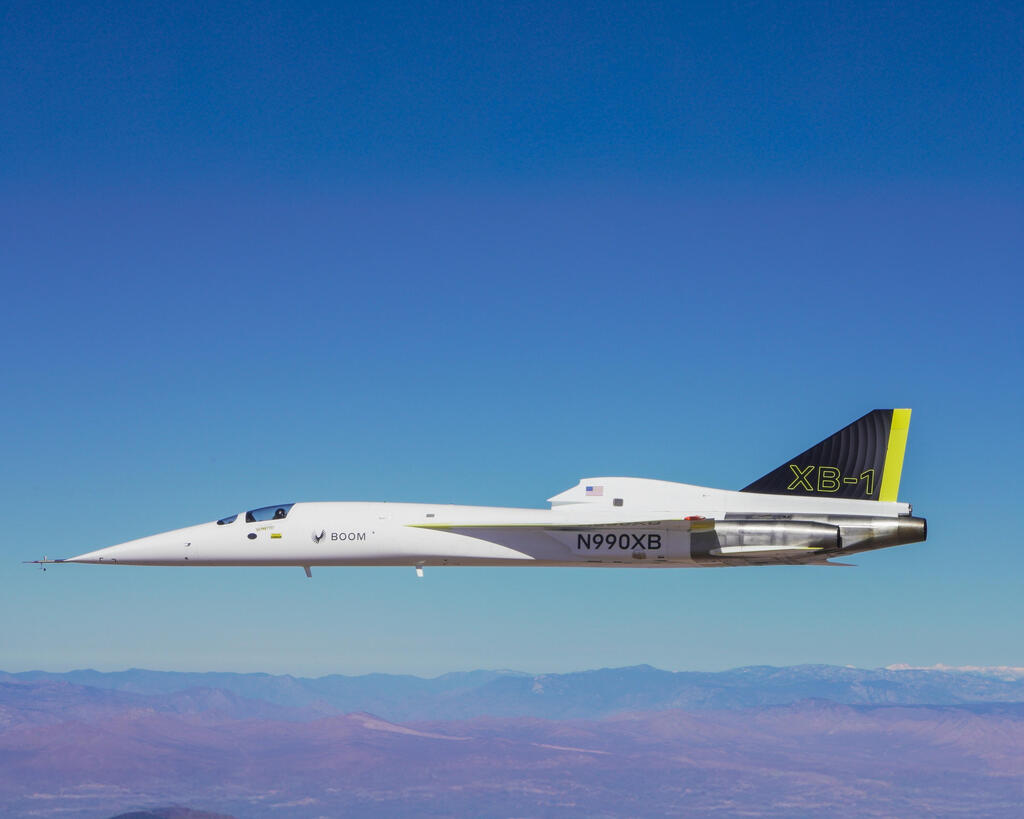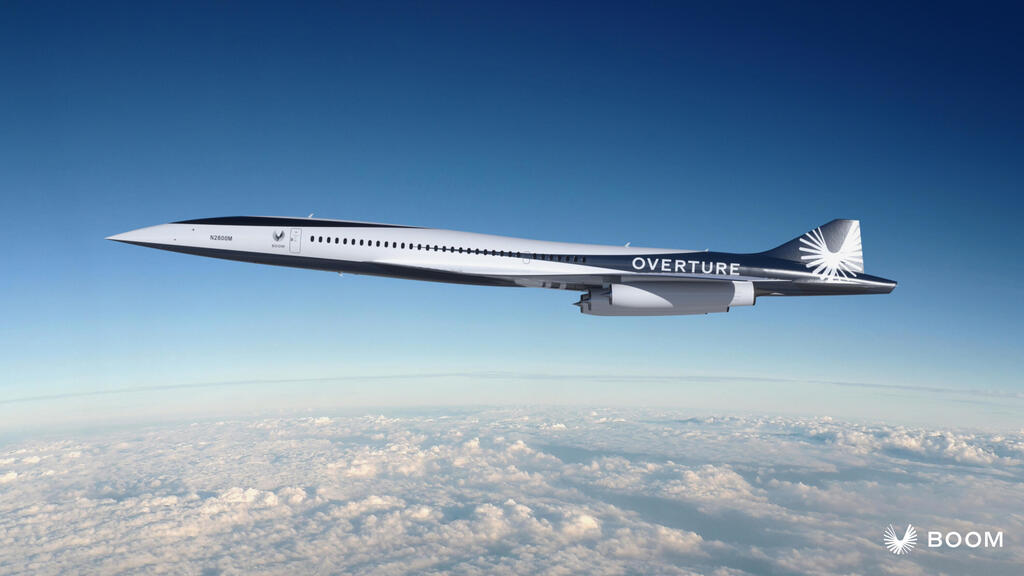Boom Technology, the company building the world's fastest passenger plane, the Overture, collaborated with NASA to capture unique images during supersonic test flights of its XB-1 demonstrator — a scaled-down prototype at a 3:1 ratio compared to the Overture. These test flights aim to help the company's engineers refine the final design of the Overture, which optimistically is expected to begin operational service by 2030.
In January, the XB-1 became the first independently developed jet to fly faster than the speed of sound, as well as the first supersonic civilian jet built in the United States. During its second supersonic flight on February 10, NASA teams on the ground used Schlieren photography, a technique that visually illustrates shock waves created when the XB-1 pushes air at supersonic speeds. "Schlieren photography requires perfect conditions, precise timing, and extraordinary piloting," a statement from Boom Technology said.
Boom's chief test pilot, Tristan "Jepto" Brandenburg, positioned the XB-1 precisely over California's Mojave Desert to allow NASA to photograph the aircraft passing in front of the sun, capturing the density changes in the air around it at speeds exceeding Mach 1.
"This image makes the invisible visible—the first civilian supersonic jet built in the U.S. breaking the sound barrier," said Blake Scholl, founder and CEO of Boom Technology.
NASA teams also collected data on the acoustic signature of the XB-1 at specific points along its flight path. Boom's analysis indicated that no supersonic boom was detected on the ground during the aircraft's supersonic flight. "This paves the way for coast-to-coast flights up to 50% faster," the CEO added.
One of the greatest challenges facing supersonic aircraft is the sonic boom effect. When breaking the sound barrier, shock waves form around the aircraft, creating pressure waves and vibrations that people on the ground hear as a loud explosion. Many countries have imposed restrictions on breaking the sound barrier over populated areas, making the avoidance of a sonic boom a significant achievement for any company in the field.
How was this extraordinary image captured? Using waypoints calculated by NASA, the XB-1 team rapidly developed avionics software to guide the pilot to specific points in space where the aircraft had to fly to align with the sun. To capture the images, NASA used ground-based telescopes with specialized filters capable of detecting air distortions, such as shock waves, around the supersonic aircraft.
"The joint efforts of NASA and Boom, while modeling the expected parameters of the XB-1's supersonic flights, pointed to a very high likelihood of operating under Mach cutoff conditions, where the sonic boom dissipates in the atmosphere and does not reach the ground," Boom Technology stated. "This effect is achieved when the sound barrier is broken at high enough altitudes, with the exact speed required depending on atmospheric conditions."
Get the Ynetnews app on your smartphone: Google Play: https://bit.ly/4eJ37pE | Apple App Store: https://bit.ly/3ZL7iNv
Supersonic boom data was collected using strategically placed microphones and sound pressure level recorders along the flight path. Data analysis from the XB-1's supersonic flights shows that supersonic flight without a disruptive sonic boom is possible. This finding aligns with previous NASA studies aimed at making commercial supersonic flights accessible to the public.
On February 10, Boom announced that it would use data gathered from the XB-1's test flight program to implement Boomless Cruise technology in its supersonic passenger plane, the Overture. The Boomless Cruise technology allows the Overture to fly at speeds up to Mach 1.3 without generating an audible sonic boom, reducing coast-to-coast flight times in the U.S. by up to 90 minutes.
Summarizing its announcement, Boom stated, "The second supersonic flight of the XB-1 marked the conclusion of its groundbreaking test flight program. The historic aircraft will now return to its birthplace in Denver, Colorado. Boom is now fully focused on upgrading the knowledge and technology gained from the XB-1 to build the Overture, its supersonic passenger plane, which has already secured 130 orders and pre-orders from airlines including American Airlines, United Airlines and Japan Airlines. In 2024, Boom completed construction of a factory in North Carolina that is expected to produce up to 66 Overture aircraft annually."
Boom is not the only company attempting to overcome the sonic boom challenge in developing a supersonic passenger plane. Last January, NASA and Lockheed Martin unveiled their quiet supersonic aircraft, the X-59. Using this unique experimental aircraft, NASA plans to gather data that will pave the way for a new generation of commercial planes capable of flying faster than the speed of sound.
The X-59, a one-of-a-kind experimental aircraft, not intended for mass production, is expected to reach speeds of approximately 925 mph (Mach 1.4). It measures 99.4 feet in length and has a wingspan of 29.5 feet. The aircraft's nose accounts for nearly one-third of its length, designed to break up shock waves that cause sonic booms. The cockpit, located near the middle of the plane, has no front windshield, and pilots will rely on screens connected to cameras. NASA and Lockheed Martin believe the aircraft's design and advanced technologies will enable the X-59 to achieve remarkable speeds while producing a quieter "sonic thump."




